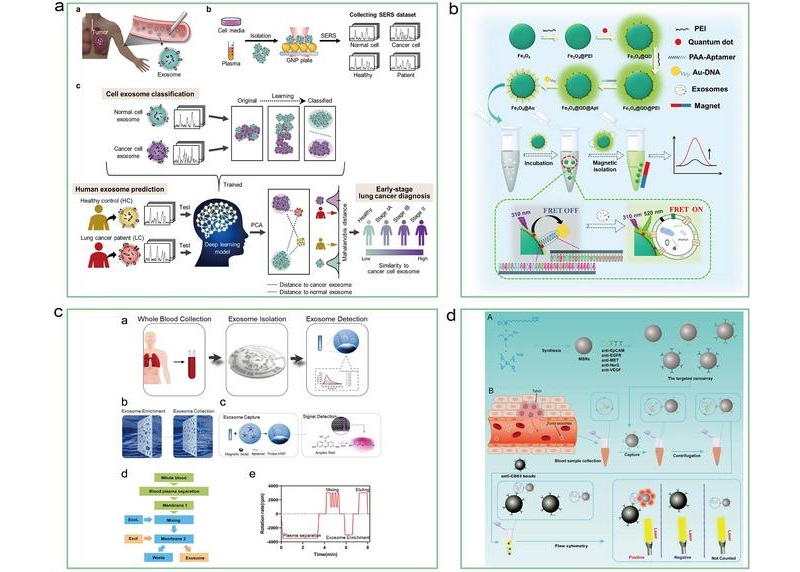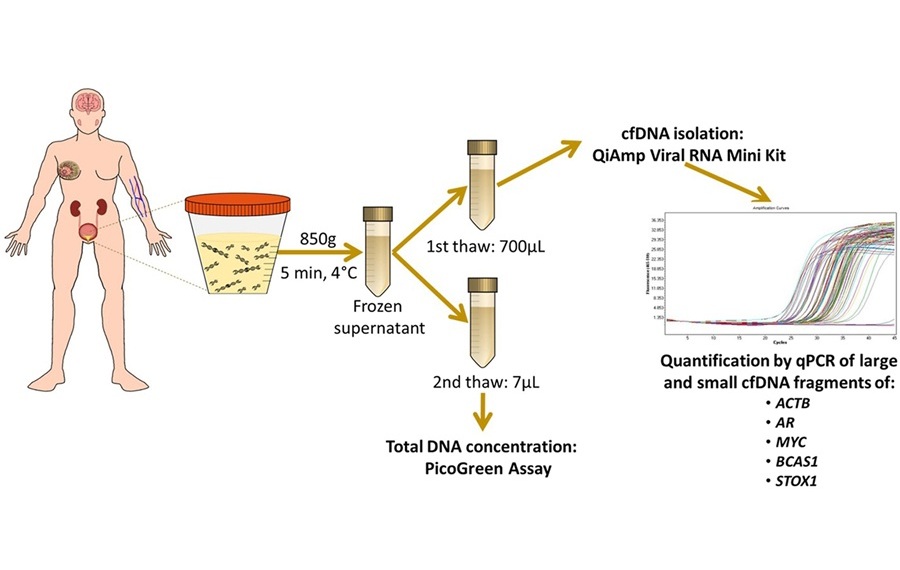Liquid Biopsy Approach to Transform Diagnosis, Monitoring and Treatment of Lung Cancer
Posted on 26 Jun 2025
Lung cancer continues to be a major contributor to cancer-related deaths globally, with its biological complexity and diverse regulatory processes making diagnosis and treatment particularly difficult. Immunotherapy, especially the use of immune checkpoint inhibitors (ICIs) that target PD-1, PD-L1, and CTLA-4, has significantly changed the landscape of cancer treatment. However, using immunohistochemistry (IHC) to measure PD-L1 levels as a predictive marker presents limitations due to inconsistencies in antibody performance, variations within tumors, and differing positivity thresholds.
Liquid biopsy (LB) has surfaced as a promising, less invasive method, enabling dynamic and broad profiling of tumor-related biomarkers in blood samples. In a review published in Oncology Advances, researchers from The Chinese University of Hong Kong (Shenzhen, China) examined the application of LB in guiding immunotherapy for lung cancer, focusing on circulating tumor cells (CTCs), exosomes, and protein biomarkers, while discussing ongoing challenges and future prospects.

LB can detect a variety of biomarkers, such as CTCs, circulating tumor DNA (ctDNA), extracellular vesicles (EVs), and tumor-related proteins, offering real-time insight into tumor behavior. Despite these advantages, LB faces issues like the scarcity of CTCs, their biological variability, and a lack of standardized procedures. New technologies, including microfluidics and nanotechnology, are helping to improve LB’s precision and reliability. Methods such as fluorescence flow cytometry and nanoparticle-based enrichment have advanced CTC detection, though more work is needed to make them widely usable in clinical settings.
CTCs, which enter the bloodstream from either primary or secondary tumors, are valuable for tracking disease progression and evaluating treatment efficacy. Their detection and analysis can shed light on tumor diversity and the immune environment. For instance, CTCs that express PD-L1 are linked to responses to immunotherapy, while changes in CTC levels are predictive of outcomes in advanced lung cancer. Single-cell multi-omics approaches applied to CTCs have deepened understanding of genetic changes behind immune resistance and treatment failure. Nonetheless, challenges in standardizing collection methods and increasing sensitivity, especially for early-stage cancer, remain.
Exosomes are tiny vesicles loaded with proteins, genetic material, and lipids that play a key role in cell-to-cell communication and immune regulation within tumors. Exosomes derived from tumors often suppress the immune system, partly by expressing PD-L1, which promotes T cell fatigue. On the other hand, exosomes released by antigen-presenting cells can trigger immune responses. Innovative detection techniques, including deep learning-enhanced surface-enhanced Raman spectroscopy and fluorescence resonance energy transfer-based sensors, have achieved strong accuracy in identifying exosomal biomarkers for early lung cancer diagnosis. However, the lack of consistent isolation protocols and the complex nature of exosome contents remain barriers to their clinical use.
Measuring PD-L1 on CTCs, exosomes, and peripheral blood mononuclear cells (PBMCs) offers a supplemental strategy to traditional tissue-based IHC. Cutting-edge LB tools such as electrochemical biosensors and photonic crystal-based single-molecule imaging have made it possible to detect low-level proteins like CEA and CYFRA21-1. These technologies offer both high sensitivity and specificity, supporting early detection and continuous monitoring of disease. Integrating this protein biomarker information with other omics data provides a fuller picture of tumor biology.
There are still major challenges for LB, including the urgent need for standardized methods, better sensitivity to detect rare biomarkers, and careful sample handling. Advances in artificial intelligence (AI) could help make sense of the complex data generated by LB, refine biomarker identification, and improve the accuracy of diagnostics. Pairing LB with tissue biopsy and combining it with multiple omics layers can address the drawbacks of relying on a single diagnostic approach. Establishing consistent practices for repeat sampling and fostering collaboration among labs are vital steps toward making LB a regular part of clinical care.
LB holds great potential for early cancer detection, ongoing monitoring, and tailoring treatments to individual patients. Through the analysis of CTCs, exosomes, and protein markers, LB delivers minimally invasive, up-to-date insights into tumor characteristics and immunotherapy effectiveness. While obstacles remain, the use of sophisticated detection methods and AI-driven analysis is expected to push LB toward broader clinical use, enhancing outcomes and supporting the goals of precision oncology.
Related Links:
The Chinese University of Hong Kong














